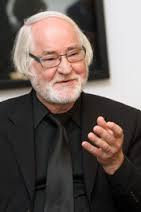On the day of Finland's centennial celebration, December 6, 2017, we had a celebration in Duluth at the Depot. Over 600 people attended to appreciate Finland's culture and independence. We also enjoyed good food, visual art, music. Many Finnish immigrants settled in Minnesota. My grandparents arrived in the early 1900s. At the event, I read these poems as way to acknowledge the sources of inspiration that continue to feed my writing.
Eeva-Liisa Manner
ASSIMILATION
I will show you a way
that I have travelled.
If you come
If you come back some day
searching for me
do you see how everything shifts
a little every moment
and becomes less pretentious
and more primitive
(like pictures drawn by children
or early forms of life:
the soul's alphabet)
you will come to a warm region
it is soft and hazy
but then I will no longer be me,
but the forest.
_________
MOTHER TONGUES by Kirsti Simonsuuri
There came a distant cool loneliness
without the hell of others
I spoke alone in all tongues
I forged keys to secret languages:
fresh water, Latin
sweet strawberry, Finnish.
My silence was as deep
as once in the womb.
__________
GROUND-ICE by Helvi Juvonen
My joy is made of ground-ice.
It does not melt.
A vein of water runs deep,
inexhaustible,
the spring shimmers
over my silver ice
clear as glass.
You see my ice.
Do not touch.
After all it is cold,
spring water.
Look.
You see a human face,
you see your own,
a good face.
IN THIS LIFE by Helvi Juvonen
I tell of an enduring summer,
streams that do not run out,
trees that do not shed their leaves,
land on which grass does not wilt.
In that land, the land of which I sing,
ravens fly, bringing food.
In that land, the land of which I sing,
there is always a hand for a human hand.
My friends, the chosen few,
I’m telling you
of truth’s enduring summer.
From Pohjajäätä [‘Ground-ice’], 1952)
_______
Poem by Risto Rasa
Niin kuin aalto uittaa aallon
yli valtameren,
niin selviydymme mekin
toinen toisiamme tukien.
Just as one wave carries another wave
Across the ocean,
So we, too, survive
One supporting the other.
_________
Älä elämää pelkää’ by Kaarlo Sarkia
Don’t be afraid of life,
don’t shut out its beauty.
Invite it to sit by your fire,
or should your hearth expire,
to meet it outside is your duty.
Do not ever say:
this is mine alone.
Drink from life’s cup
and once again give its pain up.
If you never beg to own,
the world’s riches are yours today.
Be bold, stake all on one card:
ahead you’ll always see death’s gate unbarred.
– – –
Älä elämää pelkää,
älä sen kauneutta kiellä.
Suo sen tupaasi tulla
tai jos liettä ei sulla,
sitä vastaan käy tiellä,
älä käännä sille selkää.
Älä koskaan sano:
‘Tämä on iäti minun.’
Elon maljasta juovu,
taas siitä, jos tarpeen, kivutta luovu.
On maailman rikkaus sinun,
kun mitään et omakses ano.
Elä pelotta varassa yhden kortin:
näet aina avoinna kuoleman portin.
Translated by David McDuff




